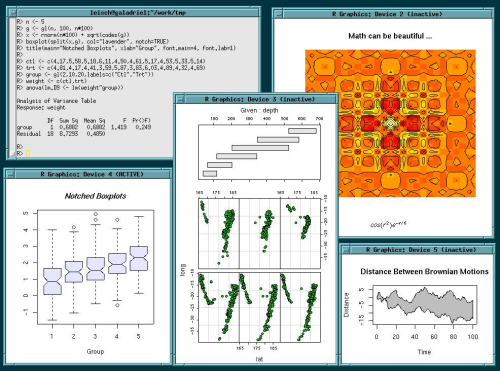r-base-latex

the design of r has been heavily influenced by two existing languages: becker, chambers & wilks' s and sussman's scheme. whereas the resulting language is very similar in appearance to s, the underlying implementation and semantics are derived from scheme.
the core of r is an interpreted computer language which allows branching and looping as well as modular programming using functions. most of the user-visible functions in r are written in r. it is possible for the user to interface to procedures written in the c, c++, or fortran languages for efficiency, and many of r's core functions do so. the r distribution contains functionality for a large number of statistical procedures and underlying applied math computations. there is also a large set of functions which provide a flexible graphical environment for creating various kinds of data presentations.
additionally, over thousand extension "packages" are available from cran, the comprehensive r archive network, many also as debian packages, named 'r-cran-
this packages provides latex documentation suitable for off-line printing for the libraries included in the r-base package. it is not a required package as the same documentation is already included for on-line browsing.